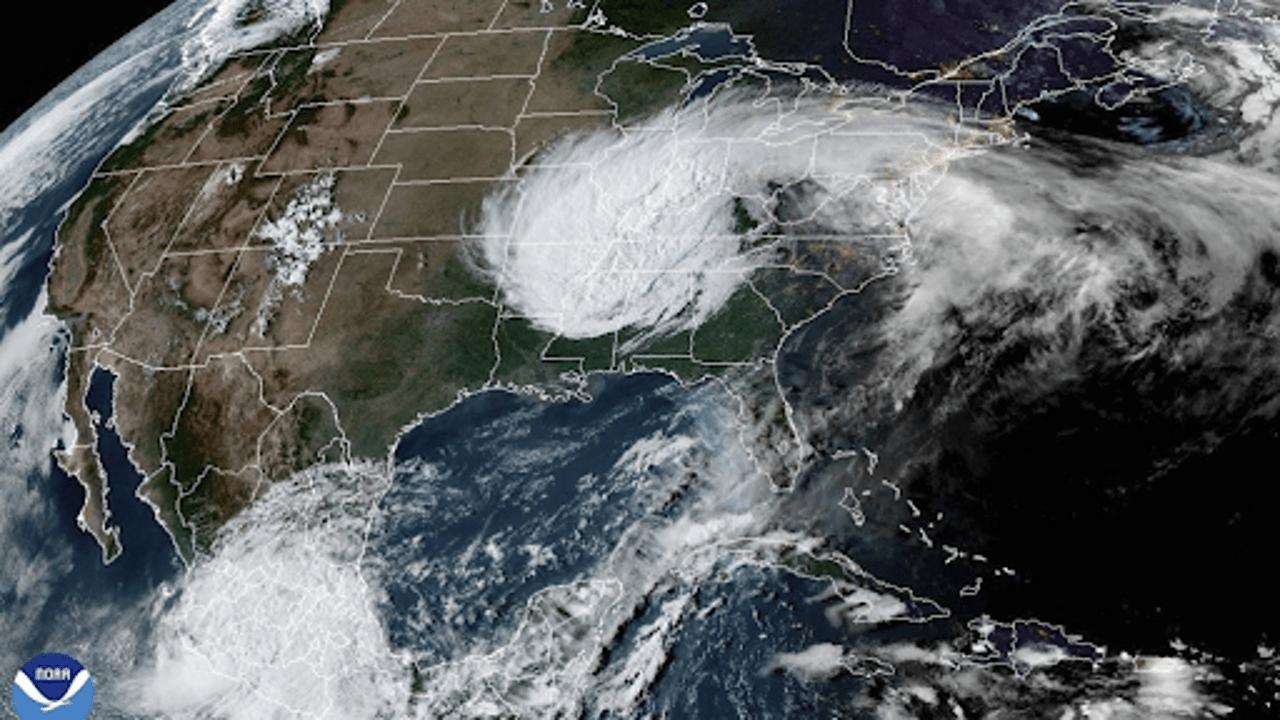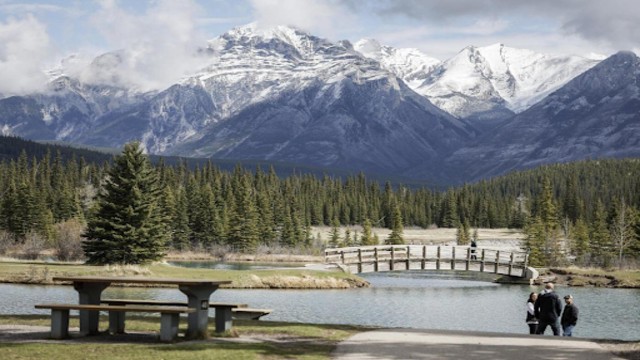
A satellite image from the National Oceanic and Atmospheric Administration, captured at 6:11 p.m. ET, reveals Hurricane Helene as it weakened into a post-tropical cyclone over the United States on Friday, September 27, 2024. AP Photo
Hurricane Helene tore through Florida and the southeastern U.S. on Friday, leaving a trail of devastation and claiming at least 44 lives. The powerful Category 4 storm, with winds reaching 140 mph (225 km/h), snapped trees, ripped homes apart, and knocked out power across several states. Among the dead were three firefighters, a woman and her twin infants, and an elderly woman crushed by a falling tree. The storm wreaked havoc across Florida, Georgia, North Carolina, South Carolina, and Virginia.
In southern Georgia, hospitals lost power, forcing emergency crews to cut through debris to access roads. Governor Brian Kemp confirmed that teams were using chainsaws to clear blocked routes. The hurricane made landfall in Florida’s rural Big Bend region, an area known for its fishing villages and vacation spots, late Thursday. Moody’s Analytics has estimated the storm’s destruction could cause between $15 billion to $26 billion in property damage.
The devastation stretched hundreds of miles, even affecting northeastern Tennessee. A helicopter rescue mission was conducted to save 54 people trapped on the roof of a hospital in Unicoi County due to rising floodwaters. Luckily, everyone was evacuated safely. In North Carolina, neighbourhoods around a lake, made famous by the movie "Dirty Dancing," were evacuated after the dam overflowed, though it remained intact. Tornadoes spun off the storm in some areas, like Nash County in North Carolina, injuring four people.
The aftermath of Hurricane Helene shows significant damage to the Faraway Inn Cottages and Motel in Cedar Key, Florida, on Friday, September 27, 2024. AP Photo
Atlanta was hit by a record rainfall of over 11 inches within 48 hours, flooding large parts of the city. In many places, only the tops of cars were visible above the water. Meteorologists attributed the storm’s rapid intensification to climate change, noting how warming waters can turn a storm into a powerful hurricane in mere hours.
In Florida, the destruction was catastrophic. Laurie Lilliott returned to her home in Dekle Beach to find it in ruins, with parts of it washed away by the storm surge. Her name and phone number inked on her arm, were a sad reminder of the risks locals faced during the storm. Taylor County officials had urged residents to mark their bodies in case they were found after the storm.
Pinellas County Sheriff Bob Gualtieri noted that five deaths occurred in evacuation zones. Residents who ignored the evacuation orders found themselves trapped in their attics as water levels rose. Search-and-rescue teams are continuing to check flooded homes, and the death toll could rise.
In Georgia and the Carolinas, the toll was heavy as well. Two firefighters in South Carolina and one in Georgia were killed by falling trees. In the town of Perry, Florida, where the storm first hit, homes were flipped over, roofs were torn off buildings, and a newly replaced church roof from a previous hurricane was stripped away again.
A line of Army vehicles drives through a flooded street in Acapulco, Mexico, following the passage of Hurricane John on Friday, September 27, 2024. AP Photo
As water surged into homes in Hudson, Florida, residents scrambled to escape. Kera O’Neil, wading through chest-deep water, managed to flee with her sister and their cats, one in a plastic carrier, the other in a cardboard box. President Joe Biden expressed his concern, stating he was praying for the survivors, while federal emergency workers were deployed to assist in the rescue efforts.
At its peak, Hurricane Helene left over 3 million homes and businesses without power across Florida, Georgia, and the Carolinas. Power outages spread as far north as Ohio and Indiana. Crews worked tirelessly to restore electricity in regions where utility infrastructure was severely damaged. In South Carolina, 40% of customers were left without power, and workers had to clear debris just to assess the damage.
A vehicle is seen partially submerged in floodwaters following Hurricane Helene's impact on the area in Atlanta on Friday, September 27, 2024. (AP Photo)
The storm weakened as it moved inland but continued to unleash catastrophic flooding, especially in the Appalachian Mountains, where mudslides washed out highways and damaged homes. Rescue operations continued in North Carolina, where emergency services received over 3,300 calls in just eight hours. Forecasters warned that North Carolina could experience some of its worst flooding in over a century.
As the recovery efforts began, it became clear that the destruction caused by Helene would take weeks, if not months, to fully address. Roads remained closed, schools cancelled classes, and airports slowly reopened. Helene, the eighth named storm of the Atlantic hurricane season, also caused significant damage in Mexico and Cuba before hitting the U.S.















